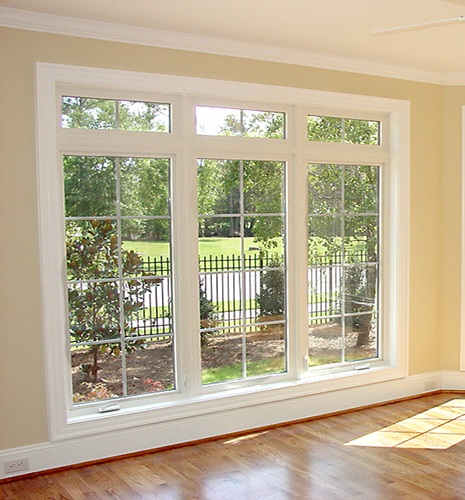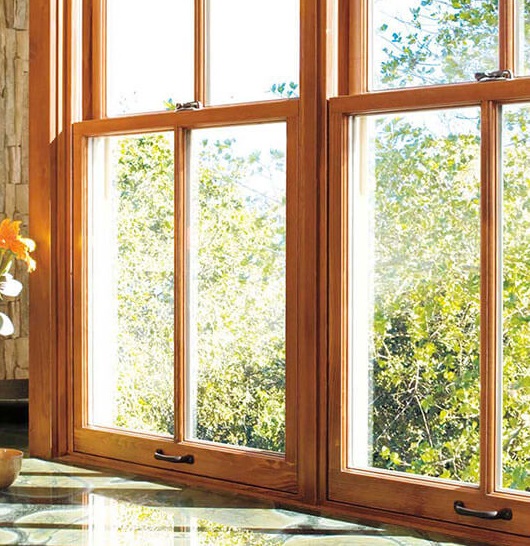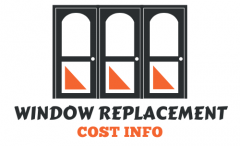
Replacement windows should fit your lifestyle, décor, and budget. With so many big window manufacturing companies out there, and so many products to pick from, how do you know which window replacements will suit you?
Pella windows are well known amongst building professionals and homeowners for being extremely energy-efficient and a number of their windows were voted Most Energy Efficient of 2019 by Energy Star. We’re going to look at their product range, pros and cons, and prices so you can decide if they’re a good fit for your project.
Who Is Pella?
Pella was founded in 1925 by the Kuyper family, who bought a roller-screen company, and then added doors and windows to its list of home products.
It introduced Pella Design Centers in 2001 to target a mainstream market. The centers operate within Lowes stores and are staffed by its employees, but are separate from the Lowes company.
Today Pella Corp is one of the top window manufacturers in the US.
Pella Window Product Ranges

Pella windows come in various quality wood, fiberglass, and vinyl frame options. They make eight different window ranges, in all of the standard styles: single and double-hung, casement, awning, and sliding.
All their windows are energy efficient and feature a low-emissivity coating that blocks ultraviolet rays. Some ranges have double or triple glazing as a standard feature.
Pella Wood Windows
- Pella Architect Series – top-tier window series that is available in both traditional and contemporary styles.
- Pella Architect Series Reserve – fully customized windows that are designed to be “historically authentic.”
- Pella Designer Series – unfinished wood interior, for the DIY homeowner who wants to finish and paint in their own style.
- Pella ProLine – affordable, standard, no-frills wooden windows
Pella Fiberglass Windows
- Pella Impervia – durable fiberglass frame that can withstand extreme heat and subzero cold.
Pella Vinyl Windows
- Pella 350 Series – premium vinyl windows
- Pella 250 Series – standard vinyl windows
- Encompass or ThermaStar (the name depends on the area) – vinyl replacement windows for the homeowner on a budget.
The higher-quality Pella windows are available with various optional, innovative features to suit your personal taste.

Grilles between glass, or GBGs, are made of removable inserts attached within the window to create an illusion of divided glass panes. This gives windows a traditional look without compromising on insulation and soundproofing.
Screens between glass are another popular modern design feature, where a shade is inserted between the panes of glass to block the sun. You can move the screen up and down with a handle on the window frame, and eliminates the hassle of cleaning a separate shade or blind.
Pella Windows Pros and Cons
Here are some pros and cons of Pella windows, to help you make an informed decision.
Pros
Energy efficiency – Pella windows are Energy Star qualified and U.S. Green Building Council LEED qualified.
Quality – Pella windows are generally consistently good-quality, well-constructed windows that are designed to last. They come with a 10-year warranty for non-glass components, and a 20-year warranty for the glass.
Range – Pella windows are available in vinyl as well as wood and fiberglass – unlike their competitor Andersen, which doesn’t make vinyl windows.
Cons
Price – Pella mid-priced windows are more expensive than many of its competitors. Its budget and premium ranges are priced more or less the same as other companies – but you’ll see a difference in price in its standard offerings.
Color options – Pella windows don’t come in as many color choices as its main competitors.
It is the local installation companies, not Pella, who set the sale price, perform the installation, and provide follow up service. We hear about local installation companies all over the country who try very hard to trade on the Pella windows name.
Pella Window Prices
We’ve already mentioned Pella’s higher prices for some of its ranges – but they have some great-quality windows at various price points. Below are the prices for Pella’s eight main window ranges – remember that the windows are sold through third-party retailers, so these prices can vary.
| Series | Material | Cost |
|---|---|---|
| Architect Series 850 | Wood | $835-$1,500 |
| Architect Series Reserve | Wood | $1,000-$1,800 |
| Designer Series 750 | Wood | $650-$1,100 |
| 450 Series/ProLine | Wood | $170-$365 |
| Impervia | Fiberglass | $225-$600 |
| 350 Series | Vinyl | $160-$335 |
| 250 Series | Vinyl | $145-$300 |
| Encompass / ThermaStar | Vinyl | $120-$315 |
Conclusion
Just like every other huge window company, Pella makes a lot of options. You will get the quality of window you’re prepared to pay for-and the local company that sells and installs your Pella windows will also affect your overall experience.
Pella’s premium and standard-quality windows have great insulation properties and have great curb appeal. They can add value to your property, and will save you money on power bills. If you have any reservations about installing Pella window replacements, try and find an installer you can trust, and go from there.

